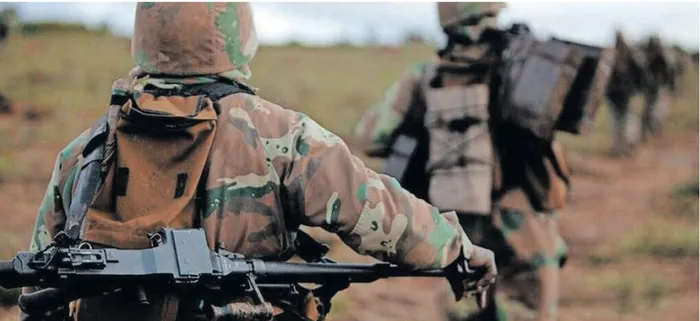Department of Defence reaffirms support for families of fallen SANDF members

Minister Angie Motshekga has outlined the Department of Defence and Military Veterans' commitment to supporting families of fallen SANDF members.
Image: File
The Department of Defence and Military Veterans has reaffirmed its commitment to supporting the families of South African National Defence Force (SANDF) members who died during deployment.
Minister Angie Motshekga outlined a robust framework of financial support aimed at easing the burden during such devastating times. This includes a myriad of benefits designed to honour the sacrifices made by the service members and alleviate the subsequent hardships faced by their families.
This follows DA’s Chris Hattingh, who, in a parliamentary question, asked the minister since 2013, what benefits and compensation fallen soldiers’ dependents have received, including details on any delays or challenges.
He also inquired about what mechanisms ensure timely and adequate support for soldiers’ dependents, how the SANDF monitors their effectiveness, and whether the SANDF has engaged with deceased soldiers’ families to assess needs and address grievances regarding support and compensation.
Responding, Motshekga said the beneficiaries of SANDF members killed during deployment are entitled to:
- SANDF funeral benefits in cash amount and SANDF funeral support for a military funeral.
- Services Funds (such as the Army Foundation, the South African Military Health Service Fund, the South African Air Force Fund, and the Navy Fund) and cash payment for contributing members.
- Group Life Insurance Scheme. Benefits include death benefits, accident benefits, disability benefits, and funeral cover.
- Compensation for Occupational Injuries and Diseases and Death. Once-off non-pensionable, non-taxable cash amount similar to the United Nations or as determined by the Minister of Defence.
- Government Employees Pension Fund (GEPF) contribution, pension benefits payment, and cash amount for funeral assistance from GEPF.
“The Department of Defence can confirm that the benefits of the SA National Defence Force members who lost their lives in the Central African Republic (CAR) in 2013 were processed and paid to the families in line with the applicable Department of Defence (DoD) policies.
“Pension benefits were paid by the Government Employee Pension Fund (GEPF) as prescribed by the Government Employee Pension Law, 1996. In addition, the DoD is currently processing the payment of benefits for members who lost their lives in the Democratic Republic of Congo (DRC),” Motshekga said.
She also explained that the Chaplain General or Officer Commanding (OC) instructs the Unit Chaplain(s) to inform families of a member’s passing. This notification must occur within six hours, regardless of time or location.
A critical consideration is that families should not be left alone immediately after receiving the news, especially when children are present, to help them cope with the initial shock.
Motshekga said the Chaplain General informs Chiefs of Services and Divisions about the incidents while simultaneously ensuring that Chaplains at Level 2 and 3 are activated to issue instructions to Level 4 Chaplains.
Whereas the Chaplain General and Level 2 and 3 Chaplains provide constant guidance, direction, and supervision of how soldiers and their families are supported by Level 4 Chaplains, General Officer Commanding (GOCs)/Flag Officer Fleet (FOF) and Officer Commanding provide support by making sure that both Level 3 and 4 Chaplains have the tools of the trade to execute their mission.
“For at least six months (depending on the family’s grieving period), Level 4 Chaplains visit these families to support them spiritually and determine the level/extent of mourning before they advise both the OCs and Level 3 Chaplains that the process is concluded.
“The ministry to the bereaved forms part of the monthly reports by Chaplains to the Chaplain General Staff Council, which in turn reports to Level 1 as part of Chaplain Service Division quarterly reports,” Motshekga said.
She added that the SANDF has engaged with the families of the deceased soldiers to assess their current needs and provide support regarding compensation.
During this engagement, families were requested to submit outstanding documents for the processing of benefits in line with the applicable DoD policies.
thobeka.ngema@inl.co.za
Related Topics: